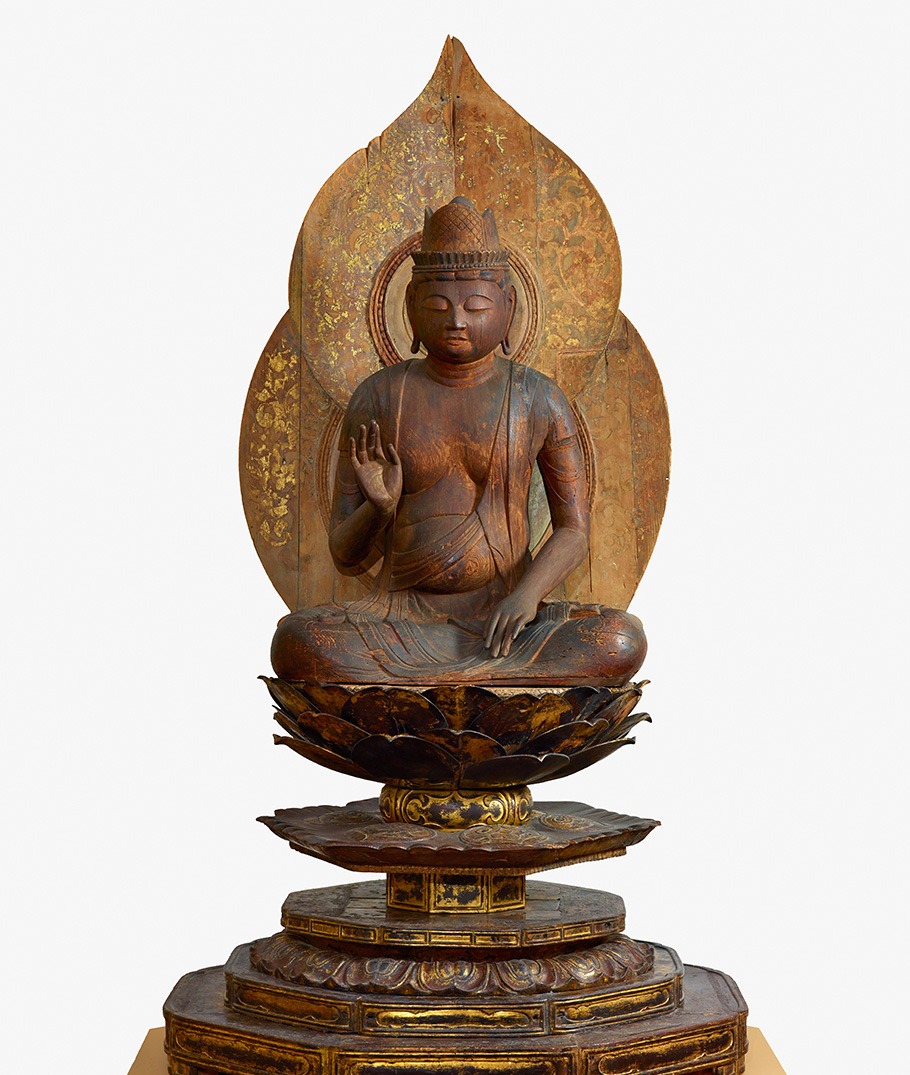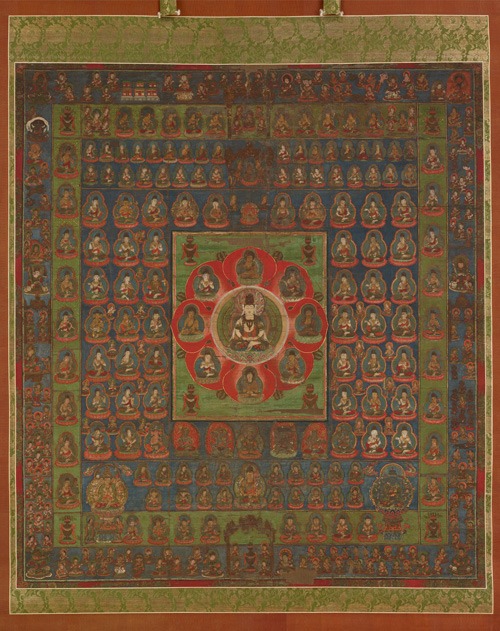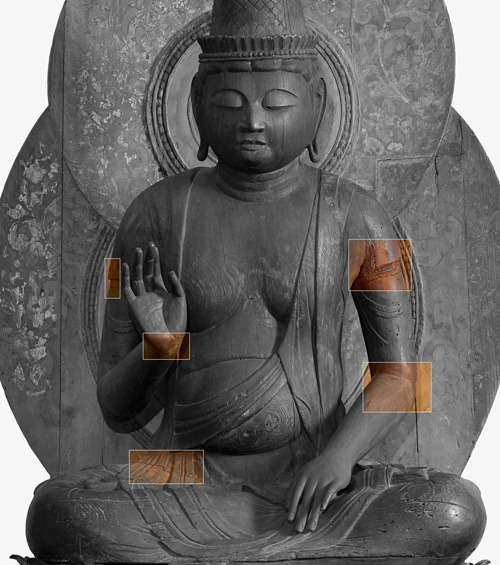 ? ?
? ?
Buddhist figures can be identified by the clothes they wear, the objects they hold, the position of their hands, and their relationship to other images. This sculpture, however, offers very few clues about its identity. The crown, short-sleeved robe, and delicate armbands identify the figure as a bodhisattva, but the lower parts of his arms are modern replacements. His current hand gestures, which may be different than his original ones, are not specific to a particular deity, and he doesn’t hold anything that might offer clues to his identity.
If the bodhisattva was definitively part of a three-dimensional mandala, like the one pictured here, his location within the mandala would lead scholars to texts containing evidence of his identity. But for now, the singular beauty of the image must suffice.

Japanese sculptors of Buddhist images overwhelmingly preferred to work in wood, joining separate parts to form a single image. Carving multiple small pieces allowed the wood to dry evenly, ensuring that it would not split.
This sculpture is constructed from seven wooden parts. The head and torso are one piece, the crossed legs another. The hands connect at the wrists, and the forearms attach at the elbows. The gold-decorated halo behind the figure also is attached separately. And the elaborate lotus pedestal consists of another eight pieces. A close examination of the sculpture reveals where the different pieces connect.